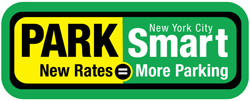On September 12th I had the opportunity to attend an event held by The Brick Industry Association for architects and planners. It was held at M&T Bank Stadium and we were able to tour the locker room and go on the field. It was a fun learning experience and it was free (for students)! Below I share notes from the seminar, which included three speakers.
Designing Buildings and Communities for Resiliency
Masonry Resiliency: More Than Building Codes - David Biggs
Resiliency is he ability of a system yo quickly return to equilibrium after disturbance or disaster.
Resilience includes the capacity to anticipate and minimize potential destructive forces through adaptation and resistance.
Sustainable is not equal to resilient.
Characteristics of resilience:
Safety
Durability
Purpose of building codes:
To protect life, health, and safety
Minimum code standards have become defacto to design standard
Not to necessarily provide resiliency
USA Resiliency References:
Government and FEMA Documents
Insurance Industry
Construction Industry
Resilience and Post Disaster Recovery - James Schwab, Manager, APA Hazards Planning Research Center
Suggested reading: "The Resilient City"
1: The Vision of a Resilient Community
Resilience as a concept for governance
Resilience in functional and economic terms
Ability to adapt to social, economic, political, and physical change
Resiliency in the context of natural hazards
Plans for recovery after disasters
Building a local culture of disaster awareness
Providing a focus for per-disaster exercises among designated public officials
Opportunity to establish clear lines of responsibility should the need arise for long term community recovery
2: Disaster Preparedness and Recovery: Expectation and Reality
Components of disaster management
Primer on disaster preparedness
Major federal legislation discussing disaster preparedness
3: Long-term Recovery Planning: Goals and Policies
Whole community recovery (Quality of life in addition to physical rebuilding)
Opportunities for post disaster recovery
Land use
Infrastructure
Housing
Economic redevelopment
4: Long-term Recovery Planning: Process
Where and when to start
Before & After
Leadership and collaboration
Broadening public involvement
Psychological and emotional consideration (Grieve)
5: Long :Implementation
Organization and roles
Financing implementation
Estimate milestones and timetables
Implementation as a community enterprise
Legal issues
Measuring success
6: Next Steps in Creating Resilient Communities
Resilience and the future of planning
Fostering public understanding of environmental change
Green communities and economic development
Seizing opportunities and anticipating the unexpected
Case study: Greensburg, KS
The Inherent Sustainability of Brick - Tom Liebel, Mark Thomas Architects
Economy
Brick may be more expensive at the outset but has a life span of 100+ years.
Ecology
It takes a lot of energy and fossil fuels to fire brick, but the industry is becoming more efficiency in that process. Contrarily making brick has much lower impact on water consumption, as opposed to the less expensive vinyl siding which also has great health risks.
Brick tends to be locally sourced lowering the environmental impact of shipping.
Equity
Quality of environment:
Bringing people together to create the sense of community
Bring a sense of history and permanence
Case Study: Millers Court at Howard and 26th Streets, Baltimore










